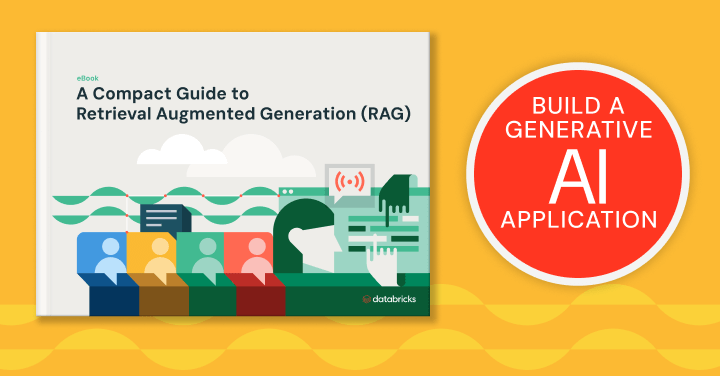Prompt Engineering
What is Prompt Engineering?
Prompt engineering is an emerging field at the forefront of artificial intelligence (AI) development that focuses on the critical processes of crafting effective inputs for generative AI (GenAI) models. As AI systems become increasingly sophisticated, the ability to communicate with them effectively has become a crucial skill. Prompt engineering bridges the gap between human intent and machine understanding, ensuring that AI tools produce optimal outputs.
At its core, prompt engineering involves designing and refining the natural language instructions given to AI models. These instructions, known as prompts, guide the AI in performing specific tasks, from generating text and answering questions to creating images and writing code. The goal is to elicit the most accurate, relevant and useful responses from the AI system.
A real-world example of prompt engineering in action is customer support chatbots. For instance, a major e-commerce company might use a GenAI model to power their customer service chat interface. Prompt engineers would carefully craft the initial prompts and follow-up questions to ensure the chatbot can effectively handle a wide range of customer inquiries. They might design prompts that guide the AI to ask for order numbers in a specific format, provide empathetic responses to frustrated customers or escalate complex issues to human representatives when necessary. By fine-tuning these prompts, the company can significantly improve the chatbot’s effectiveness, leading to higher customer satisfaction and reduced workload for human support staff.
Prompt engineering has become a hot topic recently due to the rapid advancement and widespread adoption of GenAI tools. Models like ChatGPT from OpenAI, Meta’s Large Language Model Meta AI (LLaMA) and Google’s BERT have demonstrated capabilities in understanding and generating human-like text. However, these models’ outputs are heavily dependent on the quality of the prompts they receive. As these AI tools become more accessible to businesses and the public, the need for effective prompt engineering has grown.
Prompt engineering is particularly important for large language models (LLMs) and other generative AI tools that rely on natural language processing. These models, trained on vast amounts of data, can perform a wide range of tasks. However, their open-ended nature means that the quality of their output heavily depends on the quality of the input they receive.
Here’s more to explore

The Big Book of Generative AI
Best practices for building production-quality GenAI applications

A Compact Guide to Retrieval Augmented Generation (RAG)
Learn techniques to enhance LLMs with enterprise data

Get Started with Generative AI
Build generative AI skills on your own and earn a Databricks certificate.
How Prompt Engineering enhances Model Behavior and Output Quality
Prompt engineering plays a crucial role in optimizing the performance of AI models by influencing their behavior and improving the quality of their outputs. Here’s how:
- Providing context: Well-crafted prompts provide essential context that helps the AI understand the nuances of the task at hand. This context can include background information, specific requirements or desired formats for the output.
- Guided reasoning: Advanced techniques like chain-of-thought prompting break down complex tasks into logical steps, guiding the AI’s reasoning process. This approach often leads to more accurate and coherent outputs, especially for problem-solving tasks.
- Reducing ambiguity: Clear, specific prompts reduce the chances of misinterpretation by the AI. This clarity is crucial for obtaining precise and relevant responses.
- Enhancing creativity: Thoughtfully designed prompts can push AI models to generate more creative and diverse outputs, especially in tasks involving content creation or ideation.
- Mitigating biases: Careful prompt engineering can help counteract inherent biases in AI models, leading to more balanced and fair outputs.
- Improving efficiency: By formulating prompts that accurately capture the user’s intent, prompt engineering can reduce the need for multiple iterations or clarifications, saving time and computational resources.
Failure modes in prompt engineering:
While effective prompt engineering can significantly enhance AI outputs, poorly designed prompts can lead to various failure modes. For example:
- Ambiguity and misinterpretation: Vague or poorly worded prompts can cause the AI to misunderstand the task, leading to irrelevant or nonsensical outputs. For example, a prompt like “Tell me about it” without any contact could result in random, unhelpful responses.
- Amplification of biases: Prompts that inadvertently contain biases can cause the AI to produce biased outputs. For instance, a prompt asking to “describe a typical doctor” without specifying diversity might lead to outputs that reinforce gender or racial stereotypes.
- Hallucination: Overly broad or poorly constrained prompts can cause the AI to generate false or misleading information. This is particularly problematic in fact-based tasks where accuracy is critical.
- Prompt injection: Maliciously crafted prompts can potentially override the AI’s initial instructions, leading to unexpected or harmful outputs. This is a security concern in public-facing AI systems.
- Over-specification: Prompts that are too specific or restrictive can limit the AI’s ability to provide useful or creative responses, essentially “handcuffing” the model’s capabilities.
- Inconsistency: Poorly designed prompt might lead to inconsistent outputs across multiple runs, making the AI system unreliable for critical applications.
- Ethical concerns: Prompts that push the AI to generate content without considering ethical implications can lead to outputs that are inappropriate, offensive or potentially harmful.
Understanding these failure modes is crucial for prompt engineers. It underscores the importance of careful prompt design, thorough testing and continuous refinement to ensure that AI systems produce reliable, unbiased and beneficial outputs.
Exploring different types of Prompts: Text Completion, Question Answering and more
Prompt engineering encompasses various types of prompts, each tailored to specific tasks and desired outcomes. This includes multitask prompts, where the AI is instructed to perform different tasks within the same prompt, such as summarization followed by sentiment analysis. Understanding these different types is crucial for effectively leveraging AI capabilities:
- Text completion prompts: These prompts are designed to have the AI continue or expand on a given piece of text. They’re useful for tasks like content generation, story writing or even code completion. For example, in creative writing, an author might use a text completion prompt to generate ideas for plot twists or character development in a novel.
- Question-answer prompts: These prompts frame queries in a way that elicits precise and relevant answers from the AI. They’re particularly useful for information retrieval and knowledge-based tasks. For example, in educational settings, teachers might use question-answering prompts to create interactive quizzes or provide personalized explanations to students.
- Summarization prompts: These prompts instruct the AI to condense longer texts into concise summaries, maintaining key information while reducing length. For example, in business, professionals might use summarization prompts to quickly distill key points from lengthy reports or meeting transcripts.
- Translation prompts: Used to guide AI in translating text from one language to another, these prompts often include context about the tone, style or domain of the text. For example, in international marketing, companies might use translation prompts to adapt their advertising copy for different global markets, ensuring cultural nuances are captured.
- Creative writing prompts: These prompts encourage the AI to generate original content, such as stories, poems or scripts, often providing specific themes or constraints. For example, in content marketing, brands might use creative writing prompts to generate engaging social media posts or blogs that align with their brand voice.
- Code generation prompts: Designed for programming tasks, these prompts guide the AI in writing, debugging or explaining code in various programming languages. For example, in software development, programmers might use code generation prompts to quickly prototype functions, generate boilerplate code or troubleshoot bugs.
- Image generation prompts: Used with text-to-image AI models, these prompts describe the desired visual output in detail, including style, composition and specific elements. For example, in graphic design, artists might use image generation prompts to create concept art or visualize ideas before committing to a full design process.
- Task-specific prompts: These are customized prompts for specialized tasks like sentiment analysis, entity recognition or data extraction. For example, in market research, analysts might use sentiment analysis prompts to gauge public opinion on a new product launch by analyzing social media comments.
- Multitask prompts: These complex prompts instruct the AI to perform multiple tasks in sequence or in parallel, combining different types of prompts. For example, a multitask prompt might ask the AI to summarize a social media post, analyze its sentiment and flag any potentially inappropriate content.
Effective strategies for writing Prompts: Key principles and best practices
Crafting effective prompts is both an art and a science. Here are some key principles and best practices for prompt engineering:
- Be clear and specific: Clarity is paramount in prompt engineering. Avoid ambiguity and provide specific instructions about what you want the AI to do.
- Provide context: Include relevant background information or examples to help the AI understand the task better.
- Use consistent formatting: Maintain a consistent structure in your prompts, especially when dealing with complex tasks or multistep processes.
- Experiment with different approaches: Try various phrasings and structures to see which yields the best results. Prompt engineering often involves iteration and refinement.
- Leverage few-shot Learning: When appropriate, include a few examples of the desired output within the prompt. This technique, known as few-shot prompting, can significantly improve the AI’s performance on specific tasks.
- Consider the model’s limitations: Be aware of the AI model’s capabilities and limitations. Tailor your prompts to work within these constraints.
- Use appropriate language: Match the language complexity and tone to the task at hand. For technical tasks, use precise terminology; for creative tasks, you might use more descriptive language.
- Break down complex tasks: For intricate problems, consider breaking them down into smaller, more manageable steps using techniques like chain-of-thought prompting.
- Include explicit instructions: When necessary, provide step-by-step instructions or specific guidelines for the AI to follow.
- Test and refine: Regularly test your prompts and refine them based on the results. Prompt engineering is an iterative process.
The role of MLflow in Prompt Engineering: Compare, Analyze and Optimize
MLflow, an open source platform for managing the machine learning lifecycle, can play a significant role in prompt engineering. While MLflow was not initially designed specifically for prompt engineering, its features can be adapted to support this process, making it a valuable tool for those new to the field. MLflow provides a structured way to organize, track and optimize your work. Here’s how MLflow fits into the prompt engineering workflow:
- Experiment tracking: At its core, MLflow helps you keep track of different experiments. In prompt engineering, each “experiment” could be a different prompt or set of prompts. MLflow’s experiment tracking capabilities can be used to log different prompt variations, their parameters and the resulting AI outputs. This systematic approach allows prompt engineers to easily compare the effectiveness of different prompting strategies.
- Model registry: Although prompts themselves are not models in the traditional machine learning sense, the Model Registry in MLflow can be repurposed to store and version-control different prompt templates or strategies. This helps in maintaining a catalog of effective prompts for various tasks, which is especially useful as you develop your skills and build a library of successful prompts.
- Projects: MLflow Projects can encapsulate the entire prompt engineering workflow, including prompt generation, model interaction and output evaluation. This ensures reproducibility and easier collaboration among team members, which is crucial when working in a team or sharing your work with others.
- Metrics logging: In machine learning, MLflow is used to log performance metrics. For prompt engineering, you can define relevant metrics for prompt performance (such as relevance scores, coherence measures or task-specific metrics). MLflow can then be used to log and visualize these metrics across different prompt iterations, helping you understand which prompts are most effective.
- Artifact storage: MLflow’s artifact storage can be used to save generated outputs, allowing for easy comparison and analysis of results from different prompts. This is particularly useful when you’re iterating on prompts and need to compare outputs side by side.
- Integration with AI models: MLflow can be integrated with various AI models and platforms, facilitating a streamlined workflow from prompt design to model interaction and output analysis. This integration can help you manage the entire prompt engineering process, from ideation to evaluation, in one place.
- By leveraging MLflow in prompt engineering, organizations can bring a more structured and data-driven approach to the process, enabling systematic optimization of prompts for better AI performance.
How to test and refine your Prompts for Optimal Performance
Testing and refining prompts is a critical step in the prompt engineering process. Here’s a systematic approach to optimizing your prompts:
- Establish baseline performance: Start with a simplified version of your prompt and measure its performance. This serves as a baseline comparison.
- Define clear metrics: Determine what constitutes success for your specific task. This could be accuracy, relevance, creativity or task completion rate.
- Create variations: Develop multiple versions of your prompt, varying elements like phrasing, structure and level of detail.
- Conduct A/B testing: Systematically compare different prompt variations to see which performs best according to your defined metrics.
- Analyze outputs: Carefully examine the AI’s responses to each prompt variation. Look for patterns, inconsistencies or areas of improvement.
- Gather human feedback: If applicable, incorporate human evaluation of the AI outputs to assess qualitative aspects that might be missed by automated metrics.
- Iterate and refine: Based on your analysis, refine your prompts. This might involve adding more context, clarifying instructions or adjusting the language.
- Test edge cases: Challenge your prompts with unusual or extreme scenarios to ensure robustness.
- Consider different user personas: If your prompts will be used by diverse users, test how they perform for different user types or skill levels.
- Monitor performance over time: Regularly reassess your prompts’ effectiveness, especially if the underlying AI model is updated or if the use case evolves.
- Document your findings: Keep detailed records of your testing process, results and insights. This documentation is valuable for future prompt engineering efforts.
By following these steps and continuously refining your approach, you can develop highly effective prompts that consistently elicit optimal performance from AI models.
Ethical considerations in prompt engineering
It’s also critical to address the ethical implications of prompt engineering. Prompt engineers should consider several key ethical areas:
Bias and fairness: Prompts can inadvertently introduce or amplify biases present in AI models. Prompt engineers must be vigilant in crafting prompts that promote fairness and inclusivity across diverse groups.
Misinformation and manipulation: Prompts have the power to guide AI in generating content, which raises concerns about potential misuse for spreading misinformation or manipulating opinions.
Privacy and data protection: Prompt engineering often involves working with sensitive data or generating content that could potentially reveal private information.
Transparency and accountability: As AI systems become more integral to decision-making processes, transparency in prompt engineering is crucial. This involves documenting the rationale behind prompt designs and being open about the limitations and potential biases of prompts.
User intent and empowerment: Prompt engineering should aim to empower users rather than manipulate or mislead them.
Ethical use cases: Consider the broader ethical implications of the tasks for which prompts are being engineered. Avoid creating prompts for applications that could cause harm or violate ethical standards.
Continuous evaluation: Ethical considerations in prompt engineering are not a one-time effort. Regular evaluation and adjustment of prompts based on their real-world impact is necessary.
Interdisciplinary collaboration: Engage with ethicists, social scientists and domain experts to ensure a well-rounded approach to ethical prompt engineering.
Regulatory compliance: Stay informed about and adhere to relevant regulations and guidelines concerning AI ethics and data protection.
Education and awareness: Promote understanding of the ethical implications of prompt engineering among practitioners and users of AI systems.
Conclusion
Prompt engineering is a critical skill. It requires a blend of creativity, technical knowledge and systematic testing. As AI continues to advance, the ability to craft effective prompts will become increasingly valuable across various industries and applications. By mastering the art and science of prompt engineering, we can unlock the full potential of AI technologies, enabling more accurate, creative and useful AI-generated outputs.